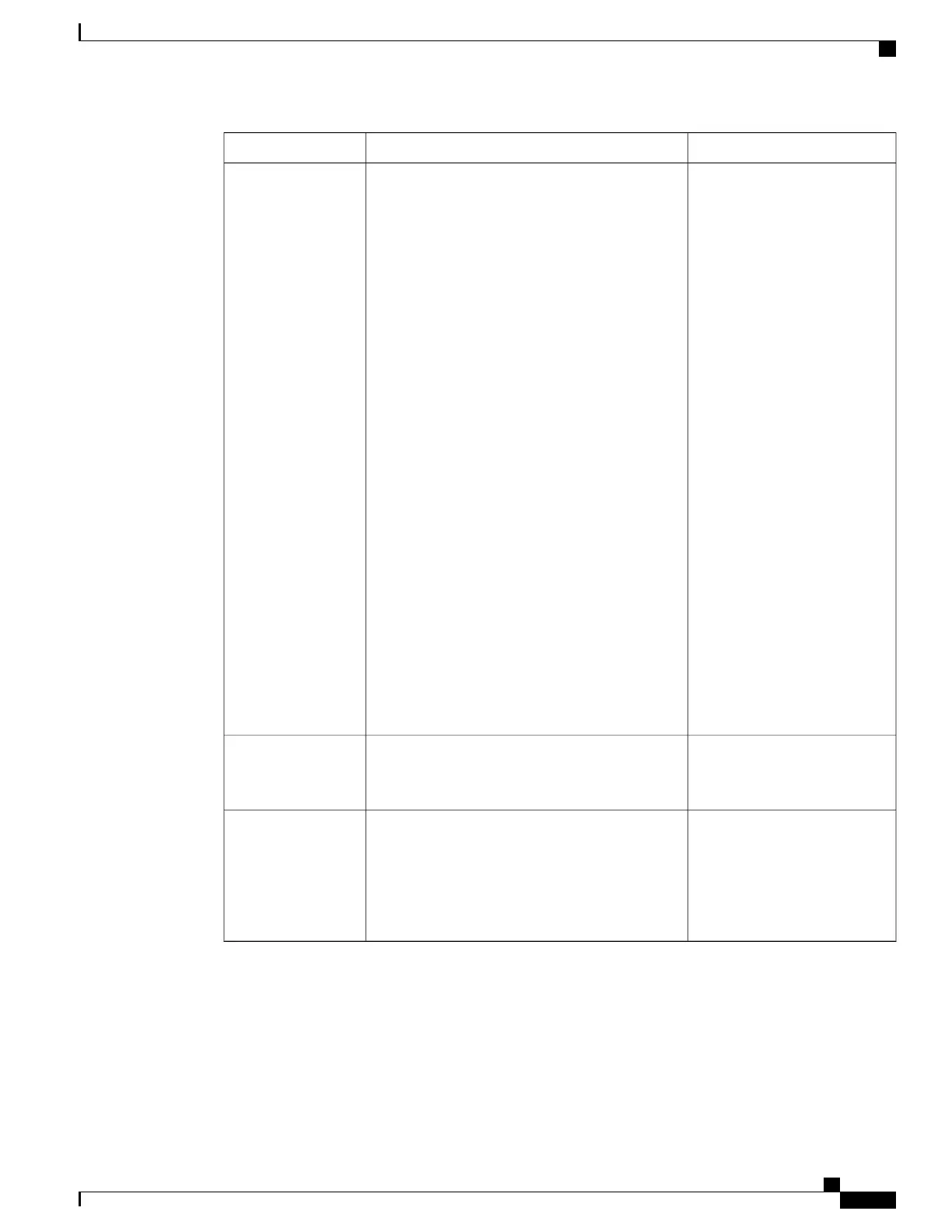To changeDescriptionOption
See Set TFTP Server 2 Field,
on page 84.
If you forget to unlock the CTL
or ITL file, you can change the
TFTP Server 2 address in either
file, then erase them by pressing
Erase from the Security
Configuration menu. A new
CTL or ITL file downloads from
the new TFTP Server 2 address.
Optional backup TFTP server that the phone uses
if the primary TFTP server is unavailable.
If neither the primary TFTP server nor the backup
TFTP server is listed in the CTL or ITL file on the
phone, you must unlock either of the files before
you can save changes to the TFTP Server 2 option.
In this case, the phone deletes either of the files
when you save changes to the TFTP Server 2
option. A new CTL or ITL file downloads from the
new TFTP Server 2 address.
When the phone looks for the TFTP server, it gives
precedence to manually assigned TFTP servers,
regardless of the protocol. If your configuration
includes both IPv6 and IPv4 TFTP servers, the
phone prioritizes the order that it looks for the
TFTP server by giving priority to manually
assigned IPv6 TFTP servers and IPv4 TFTP
servers. The phone looks for the TFTP server in
the following order:
1
Manually assigned IPv6 TFTP servers
2
Manually assigned IPv4 TFTP servers
3
DHCPv6 assigned TFTP servers
4
DHCP assigned TFTP servers
For information about the CTL or ITL file,
see Cisco Unified Communications
Manager Security Guide.
Note
TFTP Server 2
Display only.Indicates whether the phone received the IP address
from a BOOTP server rather than from a DHCP
server.
BOOTP Server
This field is editable if DHCP is
enabled. If you wish to remove
the phone from the VLAN and
release the IP address for
reassignment, set this option to
Yes and press Apply.
Releases the IP address that DHCP assigned.DHCP Address
Released
Cisco Unified IP Phone 8961, 9951, and 9971 Administration Guide for Cisco Unified Communications Manager 10.0
75
Configure Network Settings

